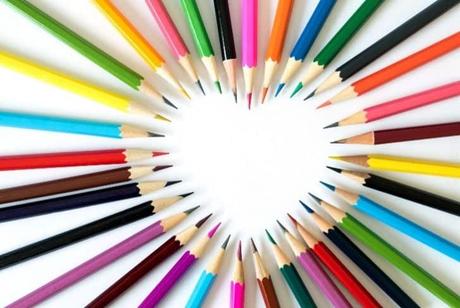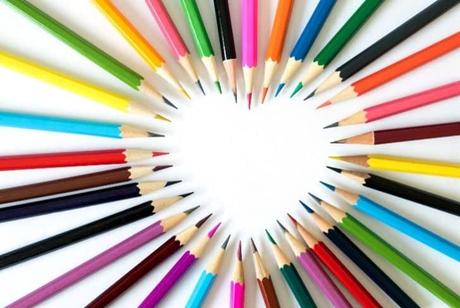Can You Recycle Pencils?
One of the first writing tools we get to experience, right next to crayons, are pencils. Through what did you learn your ABCs? Pencils. How about what you used to learn how to spell your name? Or draw your first basket? I bet it is pencils! And even though many of us “outgrow” pencils to some extent, they are still basic work materials to artists, designers, and people in related fields. It does not come as a surprise then that Forbes magazine once regarded pencils as one of the most important tools in human history, along with knives, abacuses and the compass.
Due to its common usage, about 14 billion pencils are used globally every year. Pencils are made from wood or plastic products and graphite. Yet, only the lead sticks, which is actually graphite glazed in clay, is used in learning ABCs or drawing your first basket. The rest, well, they end being shaved into dustbins, thrown away, or something like it.

With current efforts to embrace sustainable consumption including in the way we manage waste; we cannot overlook even such seemingly “micro” wastes like those from pencils. It takes one tree to make 170,000 pencils, meaning that it takes about 80,000 trees to meet the global annual demand for pencils. Talk about environmental impact!
This is why it is important to know if pencils can be recycled, and if yes, how to go about it.
Are Pencils Recyclable?
Pencils can be recycled, as most pencils are made from recyclable materials. Wooden pencils are usually made from trees like cedar and its species; as well as graphite, metal ferrules and natural or synthetic rubber. Mechanical pencils on the other hand have reusable metal or plastic casing, with graphite “lead” sticks. While wooden pencils, which are the majority, are mainly recyclable, mechanical pencils are not.
Nonetheless, this does not mean that recycling wooden pencils is an easy task. In fact, such pencils are usually not accepted in Recycling bins. This is because the process used to treat wood used for pencils (especially the low-grade types) renders them non-recyclable.
Nonetheless, it is still necessary to keep pencil wastes from landfills, if only to make up for the number of trees used in producing them. One way to do this is to use up every single centimeter of the pencil. In this way, useful pencils would not end up in the trash.
The most recyclable piece of a pencil is the ferrule, the metal piece that holds the rubber/eraser in place. This can be made from brass or aluminum. Both metals can be easily recycled in large quantities.
You might want to try purchasing eco-friendly pencils that are produced from recycled materials. There are also seed pencils like Sprout that contain seeds. All you need to do is to plant the stub of your pencil when you are done using it and voila: you have a new vegetable or tree in your garden within a month!
If you can find no other use, you can still gather up pencil stubs and use them for kindling fires if you have a fireplace.
Can You Recycle Pencil Shavings?
Pencil shavings are biodegradable, even though they decompose quite slowly; because they are usually made from cedarwood. Nonetheless, if you dispose of them in your waste bin, they are most likely going to end up in landfills. That is not exactly great for the environment. Thus, if you wish to recycle pencil shavings, it is best you do it by yourself. To begin, you would have to dedicate a bin or a substitute to collect your pencil shavings.
After you gather a sizeable amount, you can then use any of the ideas below.
1. Help your garden with your pencil shavings: If you are a lover of all things green – including green gardens – pencil shavings can be of great help. This is because pencil shavings can be used in making compost, mulching, as well as acting as a pest deterrent.
Because most pencils are made of cedarwood, which tends to scare troublesome insects away, working pencil shavings into the soil around your plants keep them safe from pest invasions. Pencil shavings can also be used to retain soil moisture. And although pencil shavings according to a study do not act as fertilizers, they still are useful when mixed with other compost materials.
2. Create recycled art: You might want to unlock your creative genius with your pencil shavings. You can always visit Pinterest to find beautiful DIY designs from pencil shavings.
3. Alternative Firelighter or Fuel: Pencil shavings serve as great sources of materials needed to light fires or keep them going. This might not be the best option if you have the environment in mind but it is definitely better than wasting away in landfills.
Are Pencils Biodegradable?
Most pencils are made of biodegradable materials, while some others (like those with plastic casing) are not. Nevertheless, not all parts of pencils made mostly with biodegradable materials are biodegradable.
In a lot of wooden pencils, the wood used for the pencil stick is made from insect resistant, durable wood. These sticks are biodegradable, even though heavy processing is sometimes used to make the wood to decay very slowly.
However, the “lead” used to actually write or draw is made from graphite which is natural crystalline carbon, which is similar to diamond. This mineral is found usually in igneous rocks and metamorphic rocks. Hence, it is typically not biodegradable or photo-degradable. Nonetheless, it may be used in composting as plants could absorb its carbon. (It is a mineral after all).
The ferrule, that metal part of pencils used to hold the erasers, are also not biodegradable. The metal cylinder is called a pencil ferrule and is traditionally made of, for example, brass or aluminum. Most pencil ferrules are however made from brass in view of their increased strength over the aluminum.
The erasers themselves are usually made of either natural rubber or synthetic rubber. Natural rubber is biodegradable, but synthetic rubbers aren’t.
Nonetheless, there are eco-friendly pencils that are made entirely of biodegradable materials. You could check out these BIC pens for example.
Are Pencils More Environmentally Friendly Than Pens?
The debate about whether pencils are more environmentally friendly than pens is quite the debate. Different logical points exist on both sides of the argument, and this would be pitted against each other to help you decide.
1. Source Materials: Most pens are made of polystyrene or similar plastics. About 70 tons of plastic are made into non-reusable pens every day. There are certain demerits of polystyrene: First, it is made from petroleum, one of the key pollutants of the climate today, and second, it is not easy to dispose of it after you are done using it.
Pencils on the other hand are usually sourced from wood and graphite. We have already seen that wood used in making pens might add up to a whooping 80,000 trees every year. Graphite mining also makes use of machinery that might add to the release of carbon dioxide into the atmosphere. On this point, it is really hard to decide which is better.
2. Waste Recycling: Recycling plastic pens are not very viable which means that a lot of them end up in landfills, considering that 2 billion pens are used in the United States alone every year. Pencils also tend to end up in landfill too but they are made materials which are able to biodegrade.
3. Transportation: Pens and pencils weigh about the same which means that the impact of their transportation and/or distribution on the environment is quite even.
4. Use: Pencils usually have a shorter lifespan than pens. Also, many plastic pens have refillable inkjets. Thus, based on length of use, pens are usually deemed more environmentally friendly than pencils. To counter this, however, most people usually have more pens than they need at the moment; and so, pens are consumed at a similar rate as pencils.
Nonetheless, some consider this argument irrelevant as both pencils and pens have their merit and demerit with regards to the environment. The most important thing is to be as eco-friendly as possible when using either: use eco-friendly pencils or pens, and find a way to recycle or reuse both where applicable. And of course, there is always the option of going completely paperless – in which case you would not need either.
Can You Put Pencils in The Recycling Bin?
Generally, you should not put pencils in the recycling bin, as most pencils cannot be recycled either because:
- They are made of mixed materials which makes them non-recyclable, or,
- They are too small to be recycled.
Wooden pencils usually fall into the latter category. The pencil shavings/stubs are too small to be sorted unless gathered up in large quantities.
Mechanical pencils are usually either metal or mixed plastic, or a mix of both. Some of the plastic is not recyclable, while others are too small to be sorted and recycled.
Nonetheless, you can always reuse your mechanical pencil by refilling the lead. You could also gather them up in large quantities and send them to recycling organizations like Terracycle that collects waste that is difficult to recycle for conversion into materials and products. To do this, get a box which you would fill up with pencils you no longer need. Then ship the box to them directly.
5 Surprising Ways To Reuse Old Pencils
First of all, please do not throw your old pencils away. There are so many uses they do have in addition to writing or making drawings with them yourself, which include:
1. Donating to those who need it most
You can show some love and make the world a better place by giving those old pencils to organizations like Pencils for Kids, who would ensure that children really in need of them get them.
2. Making Jewelry
You could chop colored pencils into small pieces and glue them together to make a variety of jewelry and accessory pieces like earrings.
3. Creating Art
You could use your old pencils to decorate your picture frame, create picture frames, decorate your pen holders, and other DIY crafts!
4. Stick for Seedlings
If you are the gardening type, you are definitely not left out. You can use your old pencils as starter sticks so that they could have something to cling to as they grow. Once they outgrow them, you could then remove the pencils and save them for another set of seedlings.
5. Making Birdhouses For Your Pet Birds
You could stack the old Pencils and glue them to form beautiful birdhouses for your pets! Even if you don’t keep birds, those birdhouses could still serve as toys for little kids. You might even paint them and add decorations.
Conclusion
Pencils have been around for a while and have been serving a great purpose. For this reason, they need to be attended to on time. We have already provided ways to deal with old pencils. The ball is now in your court.


